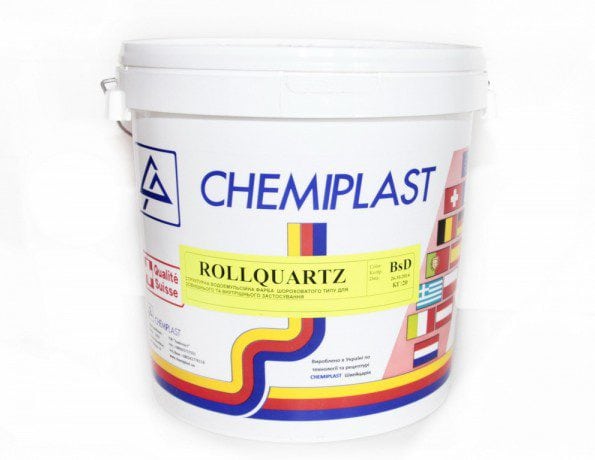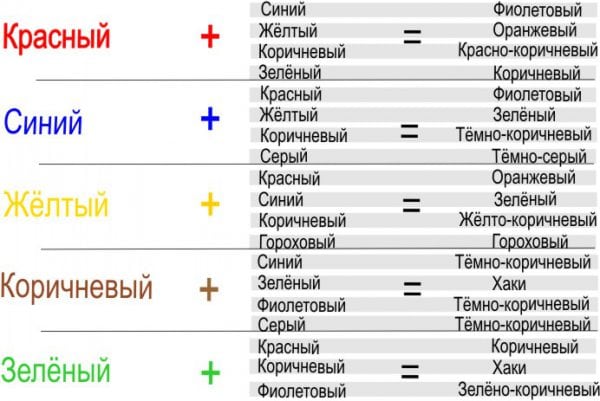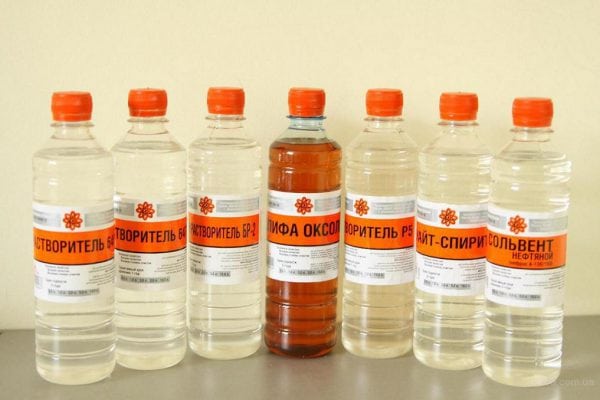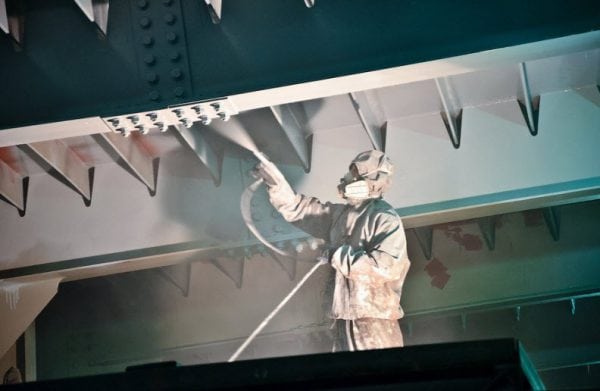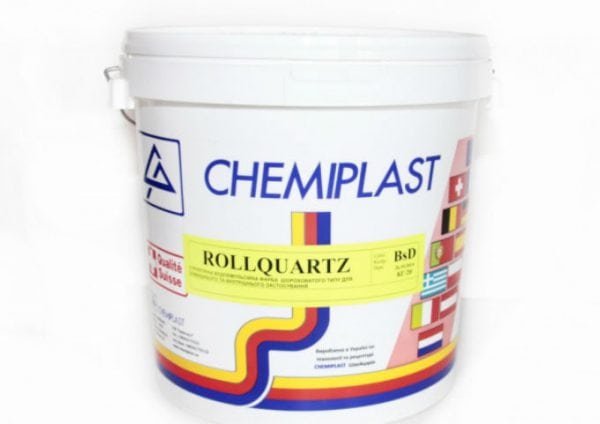Mineral paint is obtained during processing, grinding of natural minerals to a powder state. It is considered environmentally friendly, safe. Its use is able to emphasize the beauty of the structure, prevent waterlogging of the walls, provide sufficient ventilation, increase the service life of any surfaces.
- Possible shades
- What are the basics for mineral paints?
- Areas of use
- Mineral
- Polymer cement
- Emulsion, alkaline
- Oil
- Enamel
- Features at work
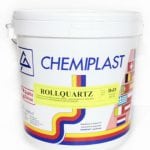
This property is explained by increased vapor permeability due to the absence of some resins and oils that make up most chemical paints. Small additives of synthetic resins to increase resistance to negative influences do not affect the quality of the coating, but only increase its wear resistance and enhance the protection of the material.
to contents ↑Possible shades
Mineral paints can create an almost limitless range of colors. When creating a specific color, one mineral powder can be used, their various combinations. Such mixing allows you to achieve the desired shade.
- White: lime, chalk with the addition of calcined zinc, lithopone, carbon dioxide, titanium ore are used to create.
- Shades of yellow: crown red (also called chrome), yellow or ocher. Chrome are distinguished by great color fastness and durability.
- Blue tones: ultramarine, glaze with chalk or lime. Azure powder is best combined with oil, enamel solvents. Direct sunlight is unacceptable, as the color may become burgundy red, uneven.
- Reds: lead, iron minium, mummy (a pigment of a mineral), are unstable under the influence of direct rays of the sun, perfectly resist other negative atmospheric phenomena.
- Greens: lead and chrome greens. By adjusting its percentage in the preparation of the solution, you can achieve the desired tone color.
- Brown: burnt sulfur, umber, used to give the surface a shade of oak, ash.
- Gray, black shades: carbon black, graphite, charcoal, manganese peroxide, carefully sifted are used.
- Metallic shades: bronze, aluminum, powdered.
The necessary color is difficult to choose on your own at home mixing various color components.
It is better to resort to the computer services of professional painters, who provide most of the major stores of building materials. They will be able to choose the necessary combination that matches the standard.
Depending on the composition, mineral paints are considered:
- natural when color gives one pigment;
- artificial, the right color scheme is achieved by a combination of different color bases.
What bases are suitable for mineral paints
The dry mixture cannot be used for painting; it must be diluted.Depending on the solvent for dry mixtures, the following groups are determined:
- Lime. Diluted with milk of lime, sometimes sodium chloride, calcium chloride, aluminum alum are added. They have predominantly light shades, short-lived, cheap. Do not apply on cement plaster.
- Cement Waterproof, good for painting exterior and interior surfaces, industrial premises with high humidity. Such paints are moisture resistant.
- Silicate. The combination of alkaline resistant pigments + filler (talc, chalk). Water-soluble, weather-resistant, resistant to humidity, temperature, suitable for all surfaces.
- Oil. They consist of various drying oils and pigments dissolved in them. Such mineral paints are manufactured in the factory, by grinding on spray guns (special machines) until a homogeneous suspension is obtained. They are durable, wear-resistant, the volume during the hardening process remains unchanged, often used as primers before applying the topcoat. Protect metal from corrosion, wood from waterlogging, rot and mold.
Areas of use
The finished paint will be considered a dry mixture, concentrate, the color of which is pre-selected. They can be used after dilution (dilution) for painting. Depending on the solvent, they can be: mineral (more often it is mineral water-based paints), polymer-cement, emulsion, oil, enamel.
Mineral
They are diluted to the required consistency with water, can be diluted with cement, casein, silicate. Casein is a paint for mineral facades, wall decoration indoors. Silicate (water glass) - work on brick, plaster, concrete, after drying, creates a protective film on the surface for 8 hours. Decorative (called gouache) are well diluted with water, form durable matte films when dried, suitable for artwork and interior decoration.
to contents ↑Polymer cement
In addition to the mineral composition and cement component, they contain polyvinyl acetate resins. Light, dry quickly. Sold in two containers: powder + solvent. Before work, they are mixed, adjusted to the desired consistency with water.
Use in external, internal works on mineral bases. Dries quickly and lasts up to 7 years.
Emulsion, alkaline
Not suitable for use on wood, but they fit well on a brick, stone, concrete base. Sold in pasty form, diluted with water. Matte or slightly shiny, they create a durable elastic film on the surface that has protective properties against adverse environmental conditions. Durable It can be used on metal after preliminary coating it with drying oil. Light tones are available.
Oil
Mineral pigment + filler + drying oil. Can be sold in concentrate form or ready to use. Concentrate divorced by drying oil. All types are designed for outdoor and indoor use, dry up to 24 hours.
Enamel
Drying oil + pigments of minerals + varnish. Suitable for painting almost all surfaces coated with a primer, including wood and metal. Lightfast, durable, resistant to negative environmental influences. Dry from 30 to 72 hours, depending on the properties of varnish and varnish included in its composition. Give a strong, glossy film.
Features at work
Mineral paints are suitable for painting new surfaces or used ones. Preparation for work is the same as with paints on any other skeleton.
- Cleaning surfaces from contamination. During restoration, exfoliating old layers are removed, the walls are cleaned and putty.
- Before starting the primer, you need to check the walls for strength, you can use ordinary tape. If the tape is clean, you can go to the next stage, if there are pieces of coating left, it needs additional strengthening.
- Application of a primer coat. When choosing a primer, it is necessary to take into account the type of solvent with which the dry mixture will be diluted, or which is already added to the finished paint. A correctly selected primer will ensure even application of the topcoat.
- When painting plastered facade walls, it should be borne in mind that the period of complete drying is about a month. Wet plaster can not be painted. An exception is painted on wet plaster, on which, after complete drying, a protective topcoat will be applied.
- Final staining is carried out in two layers. The second is applied after the first has completely dried.
Mineral paints have a wide range of applications. Depending on their properties, composition, you can:
- Give a beautiful appearance, strength and durability to the facade. When restoring the facades of old buildings made of brick, concrete, especially those built in damp places, the application can significantly increase the time until the next cosmetic repair.
- To beautifully design the room inside, giving it a unique design, to create your own style.
Due to the natural basis, the use of such natural paints has become widespread in external interior work.
They can protect and decorate mineral facades, structures made of wood, metal, beautifully decorate living quarters.

